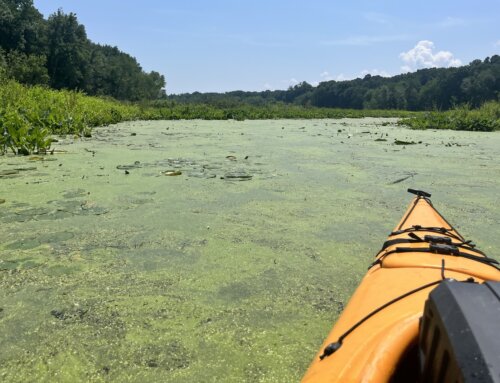July 9, 2012
Shauna Little USEPA Region 1 5 Post Office Square, Suite 100 (OEP06-1) Boston MA 02109-3912Subject: West Parish Filters Water Treatment Plant NPDES Permit
Permit Number: MA0040482, Public Notice MA-014-12
Dear Ms. Little,
I am submitting comments on the draft National Pollutant Discharge Elimination System (NPDES) permit for the West Parish Filters Water Treatment Plant on behalf the Connecticut River Watershed Council (CRC). This facility treats water from Cobble Mountain and Borden Brook reservoirs as part of the drinking water supply for the Springfield Water and Sewer Commission service area, and provides backup water supply for Southwick, Westfield, and West Springfield. The facility discharges into Cook’s Brook, a tributary of the Little River, which flows to the Westfield River. The Fact Sheet indicates that the river segment of the Little River downstream of the confluence with Cook’s Brook is listed as impaired in the Massachusetts Year 2010 Integrated List of Waters for siltation. We are particularly interested in improving water quality and habitat in the Connecticut River watershed. Our comments are below.
- Page 4 of the Fact Sheet states that the 2001 Water Quality Report for the Westfield River Watershed identifies the Plant’s filter backwash discharge as the suspected source of siltation impairment. Based on the description of backwash water from rapid and slow sand filters on page 7 of the Fact Sheet and the process flow diagrams in Attachments C and D, it is not clear why siltation from this plant would lead to impairment in the Little River. Is there a separate outfall not shown in the diagrams? Do the settling lagoons not work well?
- The fact sheet on page 7 states that rapid backwashes happen two times a day, except during the summer months when it happens three times per day. Each backwash takes 1 hour and 45 minutes to complete. The slow sand filters are flushed twice a year for two or three weeks. The draft permit requires a weekly composite sample, with samples to be collected at the time that the discharge is entering the receiving water after the start of a backwash cycle. We aren’t sure if the 4 grab samples collected at even intervals would happen just over the course of time that the backwash cycle is reaching the receiving water or not. We hope the weighted averages don’t cancel out a worse case scenario that might happen frequently.
- The draft permit proposes an average monthly TSS limit of 15 mg/L and a maximum daily limit of 30 mg/L, based on the plant’s performance. We note that this limit is more stringent than the one in the general permit, and we think this is appropriate. We don’t know if the existing DMR data showing a maximum monthly average of 14 mg/L and maximum daily of 27 mg/L under the existing general permit is representative of timing the sampling when the backwash water enters the receiving water. If so, this limit, though achievable, may not be stringent enough if this is the discharge that is contributing to the impairment downstream in the Little River.
- The Fact Sheet at page 10 explains why EPA is not establishing a numerical aluminum limit in the permit at this time. We are disappointed that ambient water quality information was not requested to be collected in advance of issuing the draft permit such that a site-specific aluminum limit could be established. Information on aluminum minimization and water quality parameters are due 2½ years after the final permit is issued. In the meantime, since aluminum is toxic to fish and the Little River is a coldwater stream in a basin that is stocked for Atlantic salmon, we recommend that WET testing be required during the months that aluminum is used until an aluminum limit is set.
- Part C(2) of the permit requires the permittee to develop, implement, and maintain a Stage 2 Disinfection Byproducts rule optimization plan. This plan appears to have no due date, but a report summarizing results of the plan are due 2½ years after the final permit is issued. Is there a reason why the plan is not requested to be submitted?
- Rather than relying on a re-opener clause for changes to the permit once water quality testing is complete (we doubt this happens very often), we recommend that the permit be amended to build in a timeline for developing a site-specific aluminum discharge limit. Therefore, we recommend that in year 3 of the permit, data analysis be done to generate a proposed limit with a summary report due to EPA. Either EPA could assist the permitee or EPA could provide the equation used to develop the limit.
Thank you for an opportunity to comment on the draft permit for the West Parish Filters Water Treatment Plant.
Sincerely,
Andrea F. Donlon
River Steward
cc: Kathleen Keohane, MassDEP
Christine Duerring, MassDEP
Cindy Delpapa, Massachusetts Riverways program
Doug Borgatti, Springfield Water and Sewer Commission







